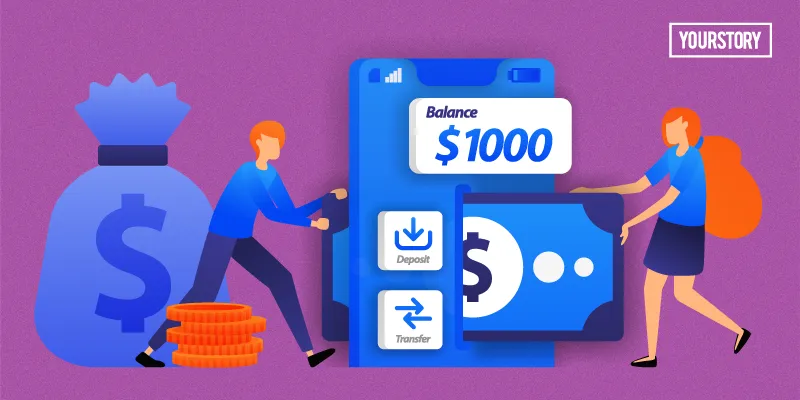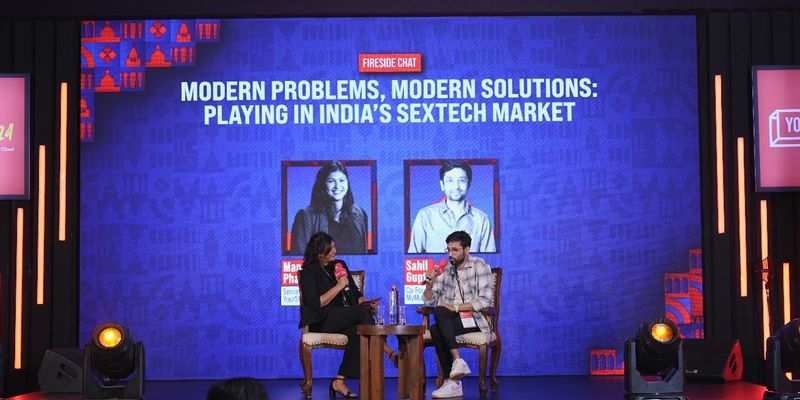[2022 Outlook] Learnings on digitising SMBs and how MSMEs can leverage fintech solutions ahead
As we draw curtains on 2021 and usher in 2022, it is time to look back at the previous year to analyse how fintechs can further leverage the paytech revolution to help MSMEs unlock their full potential.
The wave of digitisation amid the COVID-19 pandemic paved the way for a contactless world which, in turn, resulted in the widespread adoption of digital payments. While digital payments are playing a major role in facilitating financial transactions, it was also driving the big digital shift within the MSME sector.
Gone are the days when small and medium business owners used paper receipts to keep records of payments during their daily operations. Payment gateways and UPI have played a huge role in shaping this shift and ushering a new wave of paytech in the business-to-business (B2B) segment in India.
According to a report by Deloitte, the biggest advantage of digital payments has been “to automate, accelerate or de-risk payments and make for a better experience for all involved.”
In a conversation with SMBStory, Dinesh Agarwal, Founder and CEO of , says, “Today, among MSMEs, 72 percent of transactions are done through digital payments against 28 percent of cash transactions – which shows that the transformation is happening rapidly.”
Despite the digital payments boom, he adds that penetration is far lower in smaller states like Jammu and Kashmir, and several northeastern states – highlighting that even though digitally-enabling SMBs are leveraging fintech solutions, the journey is still long.
As we draw curtains on 2021 and usher 2022, we need to look into the rearview mirror and analyse how fintechs can further leverage the paytech revolution to help MSMEs unlock their full potential.
Ease in operating digital payment platforms
According to Dinesh, fintechs need to “look beyond digital payments to accelerate their adoption in retrospect,” adding, “The objective of fintech companies should be to help SMBs grow their businesses. They should provide end-to-end solutions including lending, invoicing, taxation, and an overall digital ecosystem.”
He also believes that a one-stop solution for all the business needs of MSMEs will make it easier for them to adopt fintech platforms. “Fintech companies should either have in-house technologies or should collaborate with other marketplace platforms to provide comprehensive business solutions to their customers,” Dinesh says.
“MSMEs find it cumbersome while dealing with existing banks for lending support and other related banking facilities as the processes are very time consuming and compliance procedures are intense and complex, with no added advantage to the MSME entity,” says Sundeep Mohindru, CEO of , adding that the ecosystem needs to continuously innovate to better serve MSMEs.

Personalisation
We are living in an era wherein everything – from food choices to education courses – is getting personalised. In such a scenario, there is an urgent need for fintech companies to explore personalising fintech solutions for SMBs.
Shams Tabrej, Founder of , is of the view that fintech companies need to reach out to people across all pin codes of the country, and connect with locals using their language and dialects to understand the unique needs of the MSMEs of that region.
“Simple and easy processes apart, MSMEs need services like customer outreach, virtual engagement, 24x7 support, faster turnaround with defined turnaround time, and personalised attention,” explains Sundeep.
He further adds that all these efforts are centred towards the larger goal of digital transformation and the “adoption of more and more digital payment processes” in the MSME sector.
Removing all barriers
The shift towards digital payments has been relentless in the past few years and it has also given birth to several risks for SMBs such as online scams, frauds that often leave a feeling of distrust among the owners.
Dinesh highlights that scams apart, margins on online transactions is also a stumbling block that prevents SMBs from using digital payments. He explains, “It (margins) should ideally come to zero as it will further push them to prefer digital payments and other fintech services over cash transactions.”
Fintechs can minimise these risks by using proprietary technologies and software.
Redressal centres
Small and medium business owners, especially those who own micro-enterprises, need hand-holding when it comes to adopting newer means of doing business, including digital payments.
“Therefore, it is very important for fintech companies to provide easier grievance redressal solutions with a faster resolution process,” clarifies Dinesh.
Zafar Imam, CEO of , says that Unified Dispute and Issue Resolution (UDIR) initiative by National Payments Corporation of India (NPCI) to address complaint resolution is going to further strengthen the customer confidence in digital payment methods viz UPI. “It will allow the users to raise the complaint on the app and get the resolution thereof.”
Beyond digitisation
India houses about 6.3 crore MSMEs which contribute about 30 percent to India’s GDP and 45 percent to India’s manufacturing sector. The past couple of years have been tough for the sector with the outbreak of the COVID-19 which led to a freeze in production, supply chain disruptions, plummeting revenues, and so much more.
While the key to tide over the crisis lies in digitisation, it is important to ask – what are the ecosystem’s solutions beyond digitisation?
Dinesh says MSMEs are a diverse lot and their needs cannot be addressed by a cookie-cut method. “MSMEs comprise a wide range of companies with different turnovers, different ranges of employees, and hence, different problems. But around 80 percent of Indian MSMEs do not even qualify for GST registration due to their low turnover and so their needs and problems are very different from the MSMEs with more than Rs 50 lakh revenue.”
Hardika Shah, Founder and CEO of Kinara Capital, further adds that micro-enterprises also need to have separate tax compliance and regulatory framework.
"It is only logical that a small outfit by a single micro-entrepreneur making papads should not be held to the same compliance complexities as an industrial-grade food packaging MSME that employs 100 people."
She says that making a framework to identify different MSMEs and then specifying their needs and gaps will help serve the sector better. “By doing so, it will be easier to identify the points beyond the traditional bank's credit score, which will help in higher lending to micro-businesses and enabling their inclusivity which will serve them well financially, especially during these times of uncertainty.”
Sundeep believes that the challenges of SMBs lie beyond the debate of digital maturity. “From non-availability of funds at an affordable finance cost, delayed payments from customers/buyers/government departments or agencies to attracting talent, labour issues, the list is long,” he adds.
Edited by Kanishk Singh





![[2022 Outlook] Learnings on digitising SMBs and how MSMEs can leverage fintech solutions ahead](https://images.yourstory.com/cs/21/e1da3a20368f11ea8ceed32dbcb77ccc/Image1fta-1641293553609.jpg?mode=crop&crop=faces&ar=2:1?width=3840&q=75)


